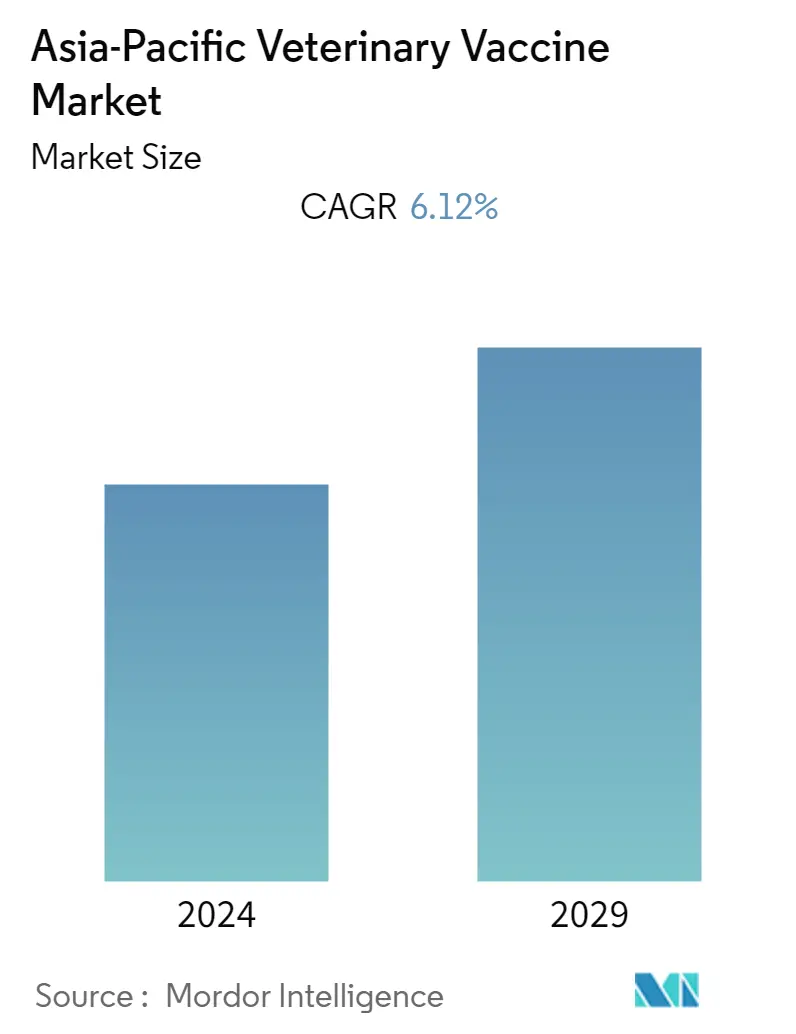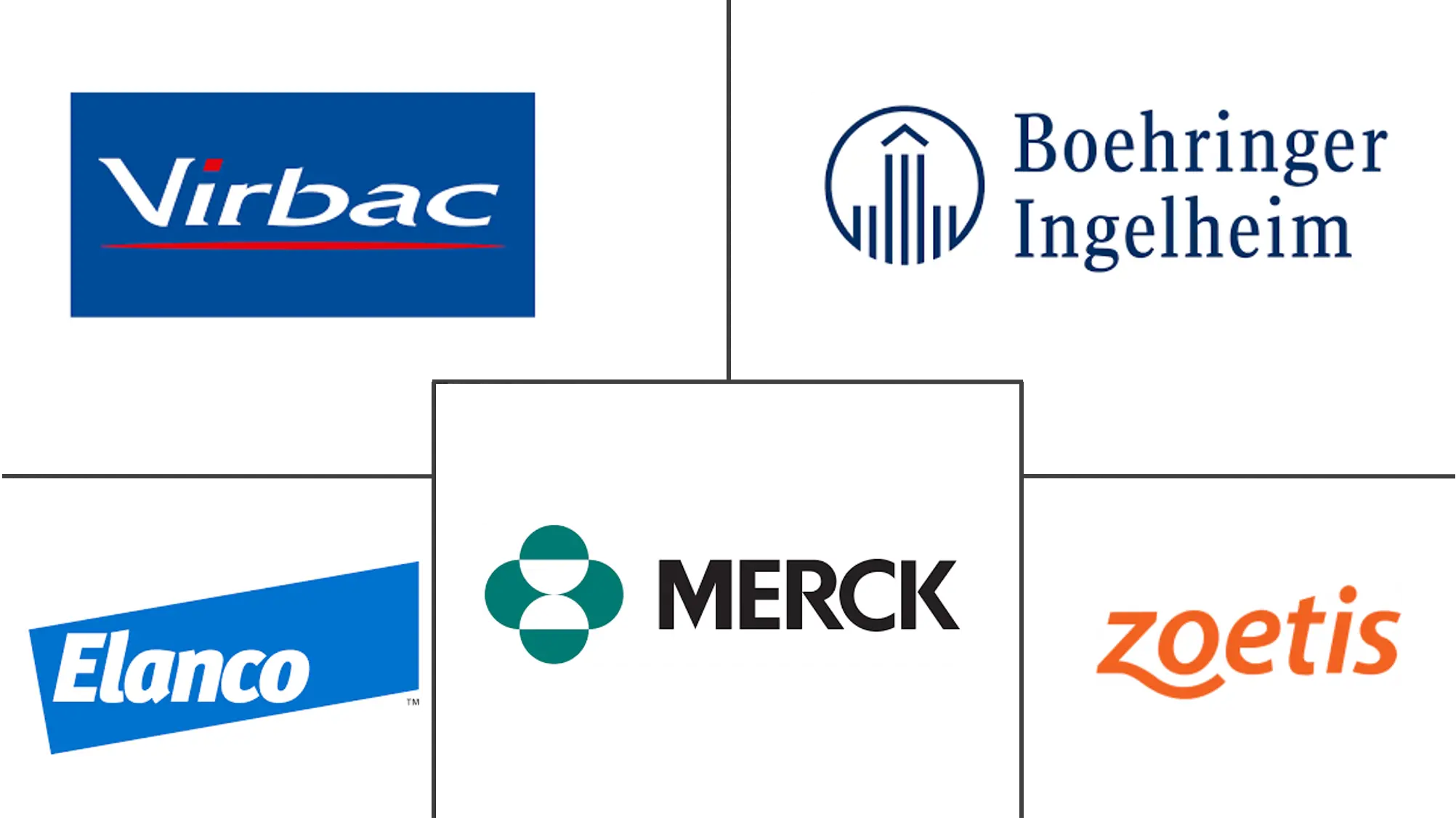Market Size of Asia-Pacific Veterinary Vaccine Industry

| Study Period | 2019 - 2029 |
| Base Year For Estimation | 2023 |
| Forecast Data Period | 2024 - 2029 |
| Historical Data Period | 2019 - 2022 |
| CAGR | 6.12 % |
| Market Concentration | Medium |
Major Players
*Disclaimer: Major Players sorted in no particular order |
Need a report that reflects how COVID-19 has impacted this market and its growth?
APAC Veterinary Vaccine Market Analysis
The Asia-Pacific veterinary vaccine market is expected to witness a CAGR of 6.12% over the forecast period.
COVID-19 has led to increased adoption of pet animals during the pandemic. For instance, as per the data published by the National Institute of Health in March 2021, it has been observed that pet adoption increased in Asian countries during the pandemic, and initial vaccinations on pets were done regularly. Moreover, according to an article published by Frontiers in May 2021, a study was conducted in countries such as Australia, the United States, Canada, New Zealand, the United Kingdom, Singapore, the Philippines, and Malaysia, which showed that during the last five years, the pet adoption rate was the highest during the early pandemic phase. Though the pet adoption rate increased during the pandemic, in several countries, the vaccination of dogs for diseases such as rabies was reduced. For instance, according to an article published by Frontiers in July 2022, a study was conducted in 48 countries in Asia and Africa, which showed that the mass dog vaccination for rabies control was heavily impacted during the early pandemic, and it was carried out as planned in just 5% of surveyed countries. Thus, the veterinary vaccines market was affected significantly as a result of COVID-19. However, as the pandemic has subsided, the pet adoption rate and the vaccination rate have gone back to normal, thus the studied market is expected to have stable growth during the forecast period.
The key factors propelling the growth of this market are the increasing incidences of livestock and zoonotic diseases, veterinary vaccination initiatives taken by various government agencies, and animal associations, as well as by the leading players operating in the Asia-Pacific region. For instance, according to a study published in the Infection Ecology & Epidemiology in September 2021, one of the most dangerous zoonotic diseases in the world is salmonellosis. Salmonella prevalence in animals and risk factors for increased transmission of salmonella spp. from animals to people were evident. Hence, with the emergence of such diseases in animals, the market studied is expected to witness growth over the forecast period.
Moreover, according to an article published by SpringerLink in May 2021, the canine adenovirus (CAV) is said to have two distinct serotypes CAV1 and CAV2. The CAV1 targets the digestive tract tissue and it is the causative agent of infectious canine hepatitis (ICH) (also called Rubarth's disease), a life-threatening disease of puppies, and the CAV2 replicates in respiratory epithelium and is associated with respiratory diseases. A study was conducted on 26 dogs in India which showed the presence of a novel CAV2 strain in dogs that is genetically distinct from other Indian CAV2 strains which are currently circulating in India. The emergence of a such highly infectious novel strain of viruses among the canine population is expected to boost the adoption of vaccines during the forecast period of the study.
Furthermore, according to an article published by Recent Advances in Canine Medicines in October 2021, canine parvovirus-2 (CPV-2) is considered a highly contagious and key entero-pathogen affecting the canine population. In India, the CPV-2a variant of the virus has recently become the most prevailing antigenic type among all variants, and the emergence of such new antigenic variants that differ significantly from the current vaccine strains is a matter of concern for the efficacy of available vaccines. Hence, the emergence of such new virus strains is expected to create more demand for veterinary vaccines.
However, high storage costs for vaccines are expected to hinder the market growth.
